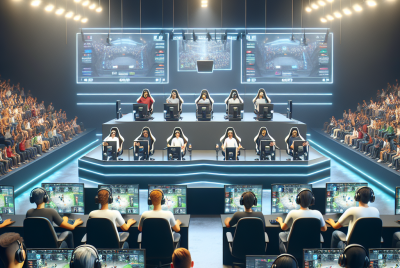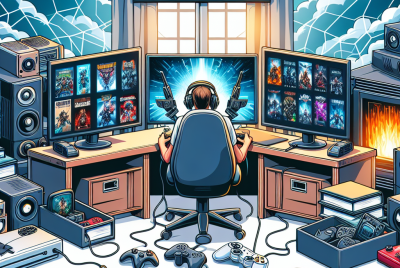The Cost of Nostalgia: Is a Retro Gaming Console Worth It?
Understanding Retro Gaming Consoles
In recent years, retro gaming consoles have surged in popularity, capturing the hearts of longtime fans and new players alike. These devices often mimic the appearance and gameplay of iconic systems from the 80s and 90s, offering a nostalgic experience that allows players to relive cherished memories. However, with this resurgence comes a question: is the financial investment in a retro gaming console worth it?
The Concept of Nostalgia
Nostalgia is a powerful feeling that evokes emotions tied to past experiences. For many gamers, the scents, sounds, and graphics of their earlier gaming experiences hold immense sentimental value. Retro gaming consoles tap into this deeply ingrained fondness, creating a buzz that translates into sales. The emotional return on investment (ROI) can sometimes outweigh the monetary costs, leading consumers to opt for these nostalgic products.
Emotional Value
A key aspect to consider is the emotional value that gaming consoles provide. For adults who grew up playing video games with friends and family, revisiting these systems can reignite joyful memories. Engaging with these classics can create a sense of connection to one’s childhood, transforming a buying decision into a personal journey through time.
The Financial Aspect
Understanding the financial implications is essential in deciding whether a gaming console is a sound investment. Prices can vary considerably based on brand, rarity, and included games.
Initial Costs
Typically, the cost of a new gaming console ranges from $60 to $300, depending on the brand and features. Popular consoles such as the NES Classic Edition and Sega Genesis Mini are priced affordably while offering a curated library of classic titles. This relatively low entry price makes it easier for individuals to join the gaming community.
Long-Term Investments
In contrast to their modern counterparts, which often require regular updates and online subscriptions, consoles can be a one-time purchase. While some may argue against the longevity of such consoles, many classic games continue to hold their value remarkably well. For instance, physical copies of games from the 1980s and 90s can appreciate in price, especially for rare editions.
Game Library Limitations
While many retro gaming consoles come with a selection of beloved games pre-installed, the library may be limited. Players might find themselves longing to play other classic games that aren’t included, which can lead to additional expenses.
Buying Additional Games
Purchasing additional games can become a costly endeavor, particularly for classic titles. Depending on the rarity and demand, prices for used copies of games can range from as low as $10 to hundreds of dollars for highly sought-after editions. Collecting these titles can quickly add to the initial investment in a console, making it essential to weigh the true cost of a complete gaming experience.
Experience Quality
One of the most compelling aspects of gaming is the authenticity of the experience. Players often find that the graphics, sound, and gameplay offer a nostalgic charm that modern consoles can’t replicate.
Graphics and Gameplay
The pixelated graphics and straightforward mechanics of retro games can evoke a deep sense of familiarity. Players are often drawn to the simplicity and challenge presented by these games. Unlike modern gaming, where graphics emphasize realism and complexity, games deliver satisfaction through straightforward, engaging gameplay that many find liberating.
Multiplayer Functionality
Many retro games also emphasize local multiplayer, offering a nostalgic social experience not commonly found in contemporary gaming. Gathering with friends to play co-op or competitive games encourages interaction, building lasting memories that electronic gaming often lacks. This social aspect adds intangible value to consoles, further justifying their costs.
Modern Alternatives
The emergence of mobile and PC gaming has led to increased access to classic titles through emulation or digital platforms, such as Steam and the Nintendo eShop. Players can often purchase titles for a fraction of the cost, challenging the necessity of investing in a dedicated retro gaming console.
Pros and Cons of Modern Alternatives
While mobile and PC gaming provide a broad access point, they lack the tactile experience of a dedicated console. For instance, playing an Xbox or PlayStation game with a controller is different from experiencing a console with a classic joystick. It’s essential for prospective buyers to consider what they value more: accessibility or the nostalgic hardware experience.
Resale Value and Collectibility
If you’re investing in a gaming console, it’s wise to consider its potential resale value. Some consumers purchase these systems not only for personal enjoyment but also as potential collectors’ items.
Rarity and Demand
As gaming consoles become harder to find, their prices can climb, particularly if the demand remains high. Investment in a limited edition console could yield significant returns in the future, making it a viable option for collectors.
Community and Engagement
The retro gaming community offers a vibrant and engaging space for enthusiasts. Online forums, social media pages, and local meetups foster connections among fans, enhancing the ownership experience of consoles.
Online Presence
Social media platforms regularly promote gaming culture, sharing tips, tricks, and memories associated with old games. Participating in these groups offers a sense of belonging that can add to the overall satisfaction derived from owning a console.
Compatibility and Technical Issues
Modern TVs often present technical challenges for gaming consoles. Input lag, scaling issues, and incompatibility with HDMI formats can detract from the experience. Consoles frequently require additional hardware to connect correctly, adding unexpected costs and complexity to the outdated technology.
Conclusion: Evaluating Investment Worth
When considering a retro gaming console, prospective buyers must assess both emotional and financial dimensions of their investment. Weighing nostalgia against practical costs is essential in understanding the true value of these consoles. For some, the heartfelt experience will outweigh the financial aspects; for others, alternative options may be more viable. Ultimately, the decision is a personal one, shaped by individual sentiment, gameplay preference, and investment outlook.




